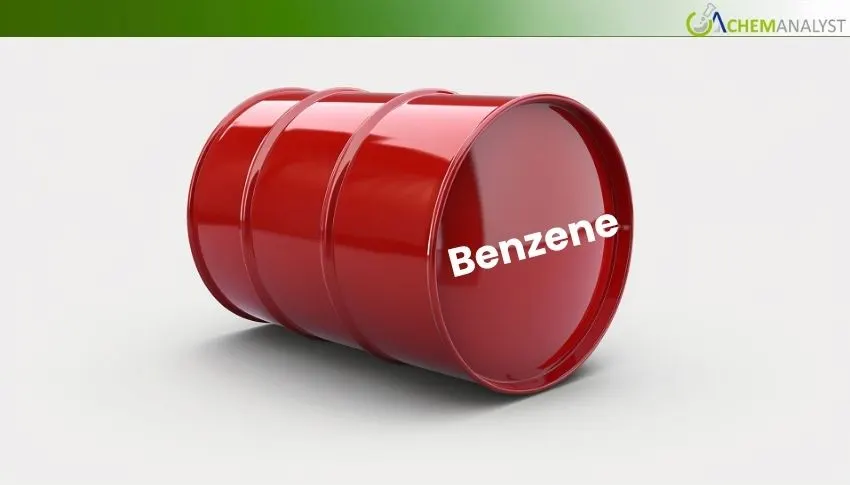Welcome To ChemAnalyst

For the week-ending October 17, 2023, the global benzene market continued to display a predominantly bearish market, with prices decreasing in Europe and Asia, but edging higher in the U.S. In China, steady refinery runs, stable energy costs, and comfortable inventories at ports contributed to well supplied markets, while muted interest in downstream pull from the phenol, styrene, and ABS markets restrained interest in restocking. In Europe, ample feedstock flows with weak demand from the Polyamide 6 sector pushed prices lower, even though energy costs to industrials increased during the same time period. In the U.S., prices gained slightly but were not indicative of market recovery as supply-demand levels seemed balanced. Overall, the supply-demand fundamentals were ample feedstock availability and downstream demand which was slow. In general, the global benzene market continues to feel bearish pressure and with steady supply chains and weak downstream demand, there appears to be the potential for additional softness in the near term. Prices are forecast to drift lower through early November.
During the week ending October 17, 2025, the global benzene market continued to display a mixed but mostly bearish sentiment as regional trends varied across the primary trading hubs. Ample availability of feedstock, steady refinery runs, and weak downstream pull remained the predominant themes driving pricing direction in Asia and Europe while the U.S. benzene market exhibited minimal gains.
In China, Benzene CFR Shanghai experienced a decrease of 1.4% week over week. The market's downtrend was driven largely by continuing bearish sentiment, mainly due to the ongoing supply chain that remained uninterrupted. Major steam crackers and refineries operated without any disruptions, keeping consistent feed to extraction units and eliminating any short-term risk of tight supply.
Supply chain costs increased modestly as electricity, coal, and LNG prices remained fairly level, which offered support for benzene production costs. In the ports of Jiangsu, Ningbo, and Zhangjiagang, there were adequate inventories of benzene so, supply for the time being was balanced. In the downstream, phenol, styrene, and ABS consumption exhibited moderate consumption rates. The futures activity for benzene also remained limited, with spotting contracts, dampening refilling interests by traders.
In comparison, the benzene market in the U.S. was somewhat stable. Benzene FOB Louisiana increased slightly at 0.7%, with steady domestic demand and supply, which appeared in balance. This modest gain for the week was also some relief against a backdrop of what had been steady losses, signalling a slight improvement in market sentiment. That said, analysts characterized the modest gain as a correction against a potential metropolitan trend, as no significant changes to correspondent supply or demand were present.
Overall, sentiment across Europe weakened further. The FOB price of Benzene in Hamburg fell by 3.70% as supply shortages across the supply chain continued to pressure the market downward. With continued deliveries of pyrolysis gasoline and reformate, extraction units have continued at full operating rates, ensuring that benzene has remained plentiful. Domestic production made up approximately 68% of the overall benzene market with the rest coming from imports.
Overall consumption was hampered by weak demand from Polyamide 6 packaging producers and low plant utilization rates for caprolactam, which weighs on overall consumption. The traditional seasonal uptick in orders had not materialized, and just-in-time purchasing practices have contributed to the downward pressure. Elevated industrial power and natural gas costs created some degree of cost-push pressure, but not enough to counteract the overall weakness across the markets.
Looking ahead, the global benzene market remains under bearish pressure, with steady supply chains and tepid downstream demand setting the tone for potential further softness in the near term. Benzene market fundamentals suggest continued weakness ahead, as stable operations and subdued derivative demand limit upward momentum, with prices likely to edge lower through early November.
We use cookies to deliver the best possible experience on our website. To learn more, visit our Privacy Policy. By continuing to use this site or by closing this box, you consent to our use of cookies. More info.
